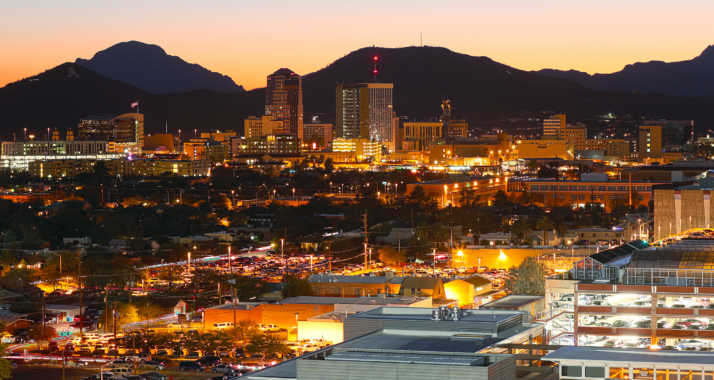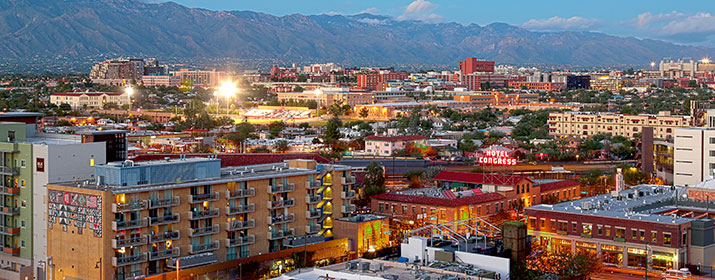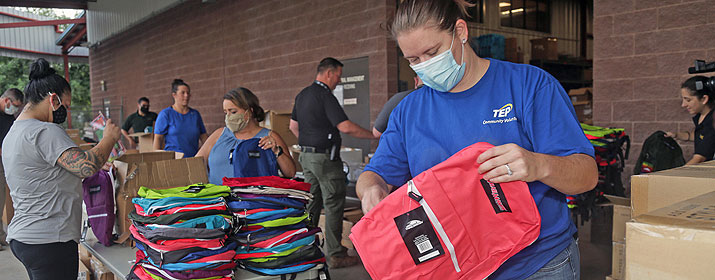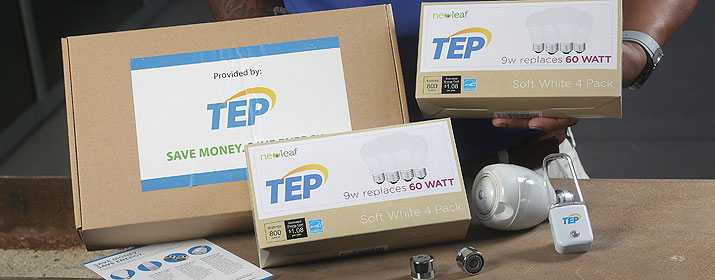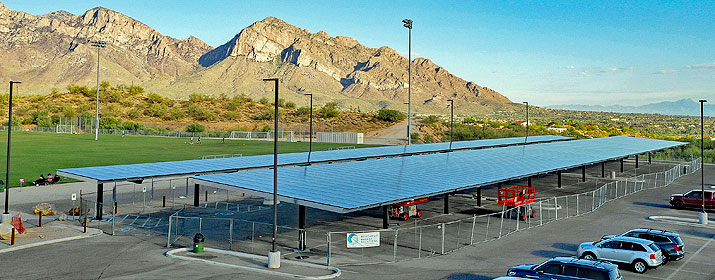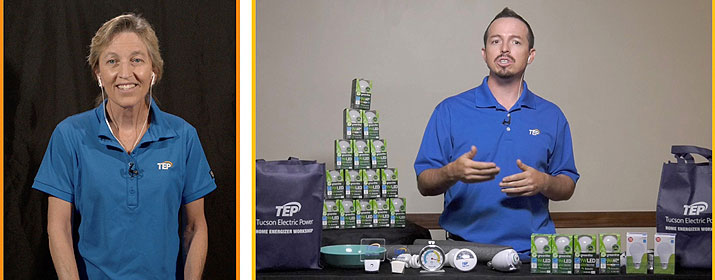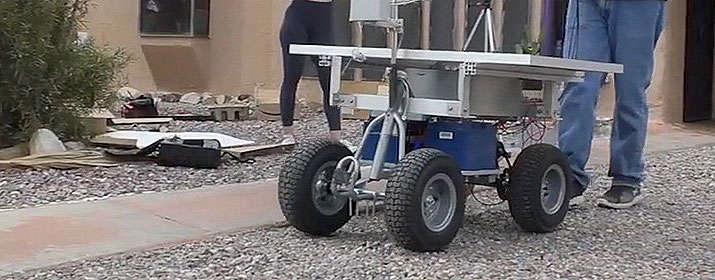
University of Arizona students started with an all-terrain vehicle made for kids.
Then, they broke it down, added gadgets and transformed the toy into a sophisticated, solar-powered robot designed to monitor a massive wind farm for Tucson Electric Power.
This spring, a team of College of Engineering seniors built a prototype of a rover to use at the Oso Grande Wind project in Roswell, N.M. in partnership with TEP. At the annual Craig M. Berge Design Day in May, the TEP team’s project took the top prize as the Most Outstanding Project.
Since 2014, TEP has partnered with the UArizona to help seniors complete capstone projects, serving as mentors and allowing use of our facilities, said Christopher Lynn, Supervisor of Automation, Metering and Protection Engineering, who oversees TEP’s program. This is the first time a TEP team has won the top prize.
In this case, students made the rover as a “proof of concept,” Christopher said. While TEP doesn’t plan on using this particular robot in New Mexico, the company retains the intellectual property and may someday put a rover to similar use.
“Every year, we try to cook up cool projects,” Christopher said. “This project started from a need to get ‘eyes-on’ our project in New Mexico, given we were grappling COVID-related travel restrictions. Plus, it looked like it could be a fun project.”
The assignment: Create a robot that could monitor 62 turbines at the 24,000-acre facility, which is more than six hours away from TEP’s Tucson headquarters. While a few TEP employees work in New Mexico, Oso Grande is so large that it takes 45 minutes to travel the length of the property. The robot was expected to gather video footage of the turbines and weather.
TEP received “overwhelming interest” from students who interviewed for spots on the team.
Torrey Petersen, the student team lead, said he liked the idea of using renewable energy to check the wind farm, instead of gas-powered vehicles.
Students ran into roadblocks during the pandemic. One student had to drop out. The remaining team members could only meet online for the first several months. Only one student was allowed at TEP’s Fabrication and Welding shop for parts of the assembly. But they were undeterred, Torrey said.
“The large scope of the project was intimidating, but it made us push forward and persevere more than anything,” Torrey said. “It allowed us to be ambitious.”
Torrey said the group started with the child’s ATV as a base for its size and off-road capabilities. They named it Oso Pequeño, coming $300 under its $4,000 budget.
“It was amazing that TEP provided the funding and innovative ideas to support work toward a more green future,” he said. “It was an absolute pleasure working with TEP for the entirety of the project.”
This is one of the many ways TEP partners with UArizona to prepare students for future careers, especially in engineering. Last year, the TEP design team built a solar-powered kiosk for visitors to buy shuttle tickets at a remote parking lot at Sabino Canyon. TEP also has sponsored the Engineering Ambassadors program to help recruit students to the college.

